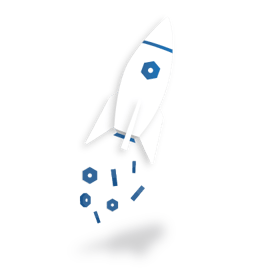It encompasses requirements management, software architecture, computer programming, software testing, software maintenance, change management, continuous integration, project management, and release management. Governance also includes resource management, data security, and user access. If a business has multiple applications , then application portfolio management enters the picture as well. The development stage of ALM is also called software development lifecycle, or SDLC. Application development.

Alle drei Bereiche – Governance , Development und Operations – sind wichtig. An open ALM platform that enables governance , traceability, and visibility across disparate tool chains and supports RBAC can help create an automatic audit trail for regulatory compliance. Although some people equate the application lifecycle with the software development lifecycle, it comprises much more.
The application development landscape in the public sector has undergone vast changes over the past decade. The shift from Waterfall and on-prem to Agile and cloud computing platforms, shared storage and data, and more dynamic applications has brought enormous benefits to government organizations, which are looking to become more efficient. In ALM, the purpose of governance is to make sure the application always provides what the business needs. Figure gives a close-up view of ALM governance , providing a bit more detail on what it entails.

Figure 2: Governance extends over the entire application lifecycle. The first step in ALM governance is business case development. Information lifecycle governance (ILG) helps you manage your business information throughout its lifecycle — from creation to deletion. It automates critical DataOps requirements like records management, electronic discovery, compliance, storage optimization and data migration initiatives. Riesenauswahl an Markenqualität.
Folge Deiner Leidenschaft bei eBay! Die liebsten Fashion-Marken kaufen. Das ist bei eBay angesagt und neu. Von Generator bis Wäsche. Alles finden, was Sie brauchen.

By Bryn Bowen, Principal, Greenheart Consulting Partners LLC - It’s a standard notion that governance should be the framework of the software development lifecycle. ALM covers the entire lifecycle from the idea conception, through to the development, testing, deployment, support and ultimately retirement of systems. Basically, it comprises the whole period in which an organization invests both time and money into a solution, from the needs of the stakeholders, to the development of ideas, the definition.
While ALM covers the entire application lifecycle , SDLC only focuses on the software development process. To be both accurate and useful, our view of application lifecycle management should take an equally broad perspective. Anything else just isn’t right.
An application lifecycle management software package offers many dramatic benefits to all development-intensive businesses, such as those that design, buil and sell software to customers and other third-parties, or companies that assign in-house IT teams to develop proprietary software for internal use by employees. User Acceptance Testing (UAT) is an important part of the development process. If UAT is delaye defects become expensive and troublesome to fix. Correct governance translates into consistent management, effectiveguidance and granted power in achieving application value.
In viewing an applications life cycle there are three areas of governance thatneed to be controlled 1. Resources and how they are used during the application life cycle 2. Risks that are associated with an application and. It is a broader term which has encompassed the several disciplines that were considered to be separate previously such as project management, requirements management, development, testing and quality assurance, customer support and IT service delivery. The global application lifecycle management market is divided into application governance , application development, application operations, based on deployment type. To turn this aroun each of the above bullet points will be addressed.
But first, a proposed definition of IT Project Lifecycle Governance (PLG) is made. Within the application realm, the relationship between applications and the production, test, and development requirements are generally most relevant for ILM. For the purposes of business records, there are five phases identified as being part of the lifecycle continuum along with one exception.
It allows for greater alignment between the development view of the applications and the live management of those applications. This ITIL lifecycle focuses on the overall management of applications as part of IT services. Understanding the characteristics.
Keine Kommentare:
Kommentar veröffentlichen
Hinweis: Nur ein Mitglied dieses Blogs kann Kommentare posten.